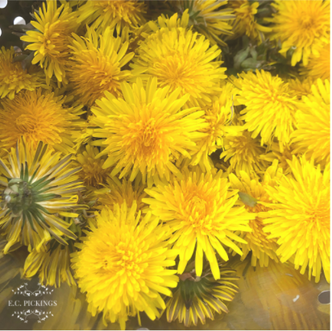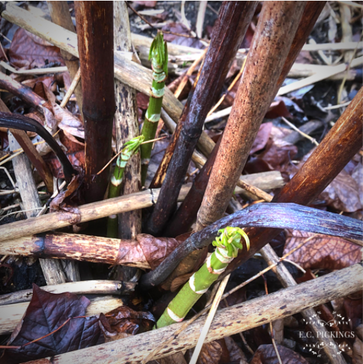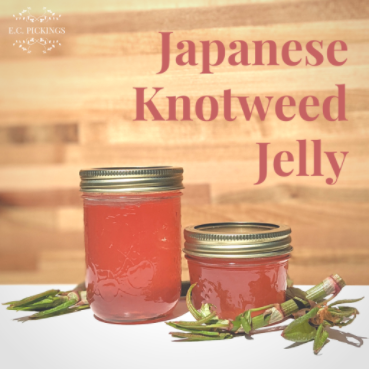What you may not know is that these trees are actually found all over Toronto! Many people overlook these tasty treats growing close by their homes. ‘Tis the season for serviceberries, so keep an eye out when you are out on your next walk. They are wonderful eaten fresh, and are also delicious in pies, jams, and other baked goods! For tips on identifying serviceberry, check this out: http://www.canadiantreetours.org/species-pages/Serviceberry.html Disclaimer: Do not consume any wild plant unless you are 100% sure of its identification. Be sure you are picking from non-polluted areas, away from roads, and where no pesticides or other contaminants may have been used. Consult your doctor before consuming wild plants.
1 Comment
Dandelions (Taraxacum officinale) are one of the most versatile weeds. They originate from Eurasia but are not considered invasive in Ontario because they do not cause significant damage to native plants and local ecosystems. I love dandelions because the whole plant is edible and nutritious! You can eat the leaves in a salad, make “dandelion coffee” with the roots, and use the flowers to make all sorts of things like jelly, syrup, and even infused soaps and lotion bars! Do you have a lot of dandelions in your yard? Not sure what to do with them? Try making some Dandelion Fritters! They are easy and tasty, and can be made sweet or savoury. smooth. Warm oil in a skillet at medium heat. Holding the bottom of the dandelions, dip the flowers into the batter and place gently into the oil. Do not crowd the pan. Once they start to turn golden brown, flip, and brown the other side. Remove from the pan and drain any excess oil. Serve fresh! Disclaimer: Do not consume any wild plant unless you are 100% sure of its identification. Be sure you are picking from non-polluted areas, away from roads, and where no pesticides or other contaminants may have been used. Consult your doctor before consuming wild plants.
Japanese Knotweed (Fallopia japonica) is native to eastern Asia and was introduced to North America as an ornamental plant in the late 19th century. As many invasive plants do, Japanese Knotweed escaped gardens and is now one of the most aggressive invasive plants in Ontario. Japanese Knotweed prefers moist soils, but can be found in many disturbed areas. The bamboo-like plant is extremely fast-growing and forms dense thickets that outcompete and displace native plants. Two-thirds of the plant is actually underground in an extensive root system, making it exceedingly difficult to remove.
Pieces of Japanese Knotweed stem or rhizome can produce new plants, so be sure to dispose of the scraps properly! I usually microwave or bake the scraps in the oven on high heat before disposing them. So what does Japanese Knotweed taste like? How should you cook it? Japanese Knotweed has a flavour similar to rhubarb— sour, with a light earthy taste. Make sure to clean your harvest thoroughly, and be aware that the plant will be slightly slimy when it gets wet. If you’re not sure what to do with knotweed, my rule of thumb is that you can take any rhubarb recipe and substitute it with Japanese Knotweed. For example, they are a great substitution in recipes like Strawberry Rhubarb Crumble, Rhubarb Custard Pie, and Rhubarb Squares. I made some Japanese Knotweed Squares using this recipe as a base, and they turned out delicious! If you’re curious to taste Japanese Knotweed, keep an eye out for their sprouting shoots in the early spring.* They grow very quickly so the earlier, the better. *If you are going to harvest Japanese Knotweed, make sure it has not been sprayed, as many regions use herbicides to try to control the invasive plant. Disclaimer: Do not consume any wild plant unless you are 100% sure of its identification. Be sure you are picking from non-polluted areas, away from roads, and where no pesticides or other contaminants may have been used. Consult your doctor before consuming wild plants.
Stinging Nettle (Urtica dioica) is out and thriving! This plant is a common sight in moist areas, and although they are considered weeds, they are edible, tasty, and healthy. Originally from Europe, this plant is invasive but not as aggressive as other invasive species.
Happy Foraging!
Disclaimer: Do not consume any wild plant unless you are 100% sure of its identification. Be sure you are picking from non-polluted areas, away from roads, and where no pesticides or other contaminants may have been used. Consult your doctor before consuming wild plants. |
AuthorWrite something about yourself. No need to be fancy, just an overview. Archives
October 2021
Categories |















 RSS Feed
RSS Feed